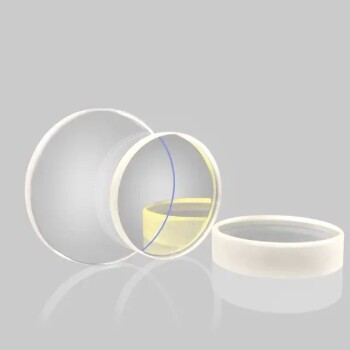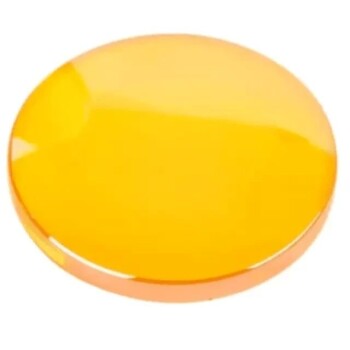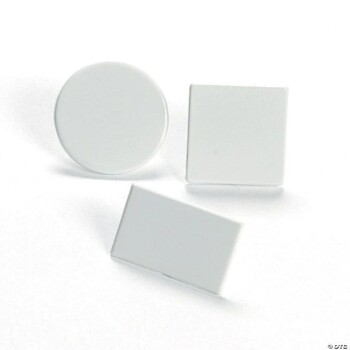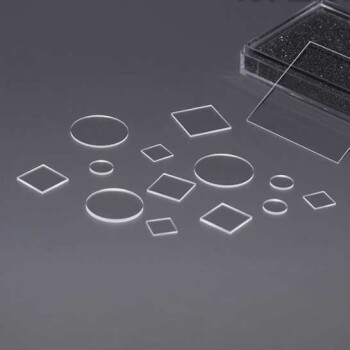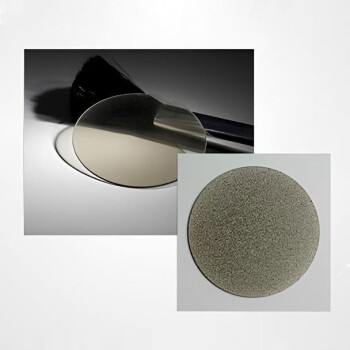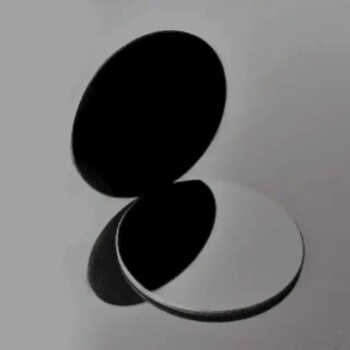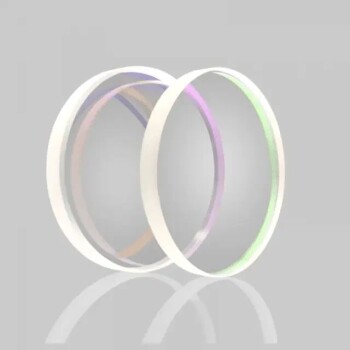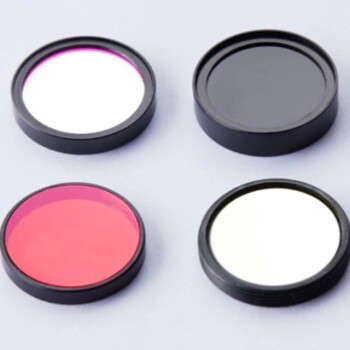高超音速飞行器简介
定义和重要性
高超音速飞行器是航空航天工程领域的突破性进展,其特点是能够以超过 5 马赫的速度飞行。这种能力使高超音速飞行器成为一个独特的类别,其性能远远超过传统飞机和导弹。高超音速技术的意义不仅仅在于速度,它从根本上重塑了军事战略和太空探索的格局。
在军事应用领域,高超音速飞行器具有无与伦比的优势。高超音速飞行器速度极快,可快速部署和躲避传统防御系统,是执行战略威慑和快速反应任务不可或缺的工具。此外,高超音速飞行器在太空对抗场景中的潜在用途凸显了其在维护国家安全和技术优势方面的关键作用。
高超音速飞行器在民用和科学领域的潜力进一步放大了其重要性。高速进入太空可彻底改变卫星部署、太空探索和科学研究,使任务更加频繁和高效。这种双重用途能力凸显了高超音速技术的深远影响,弥补了国防和太空创新之间的差距。
总之,高超音速飞行器不仅仅是一个技术奇迹;它们是未来航空航天进步的基石,对军事和民用应用都有着深远的影响。高超音速飞行器的发展标志着人类征服天空及其他领域的能力实现了重大飞跃。

飞行特性
高超音速飞行器可在超高空飞行,通常距离地球表面 20 至 100 公里。选择这一飞行高度是为了充分利用稀薄的大气层并减少阻力,从而实现持续的高超音速飞行。在这些高度上,飞行器配备了旨在促进各种关键功能的复杂系统。
这些先进系统的主要作用之一是地面观测。飞行器配备了高分辨率传感器和成像技术,可以捕捉地球表面的详细图像。这种能力对于情报搜集、环境监测和军事侦察来说非常宝贵。收集到的数据可以提供有关地面状况、潜在威胁和战略目标的实时信息。
除了地面观测,这些飞行器还配备了强大的通信能力。鉴于高超音速飞行距离遥远且面临独特挑战,可靠的通信系统至关重要。这些系统可确保任务期间收集的数据能够不间断地传回地面站或指挥中心。先进通信技术的使用,包括卫星链路和激光通信,增强了飞行器在最具挑战性的条件下保持联系的能力。
情报收集是这些先进系统的另一项重要功能。高超音速飞行器配备了先进的传感器和数据处理单元,可以实时分析和解读复杂的数据。这种能力可以快速评估态势感知,从而在执行任务期间及时做出决策和战略调整。人工智能和机器学习算法的集成进一步增强了飞行器的情报收集能力,使其成为现代军事行动不可或缺的工具。
总体而言,高超音速飞行器的飞行特性与其先进的地面观测、通信和情报收集系统相结合,使其成为军事和科学应用领域的强大资产。
红外成像和制导系统
在终端制导中的作用
红外成像制导系统在高超音速飞行器的末端制导阶段发挥着关键作用,可确保飞行器在复杂的高速飞行中保持精确和可靠。这项技术因其高精度、强大的抗干扰能力和卓越的灵敏度而不可或缺。在飞行器接近目标的末端阶段,准确感知和应对环境的能力至关重要。红外成像系统在这方面表现出色,即使在大气干扰和电磁干扰的情况下也能提供清晰、详细的图像。
红外成像的灵敏度使这些系统甚至可以探测到最微弱的热信号,因此非常适合在各种条件下跟踪目标。在传统雷达或视觉系统可能因大气畸变或伪装而失灵的情况下,这种灵敏度尤为重要。此外,红外成像系统的抗干扰能力可确保制导保持精确,即使在受到干扰或其他形式的电子战时也是如此。
总之,红外成像制导不仅是一种技术资产,而且是高超音速飞行器成功运行的必要条件,尤其是在关键的终端制导阶段。红外成像制导集精确度、灵敏度和弹性于一身,是现代高超音速技术的重要组成部分。
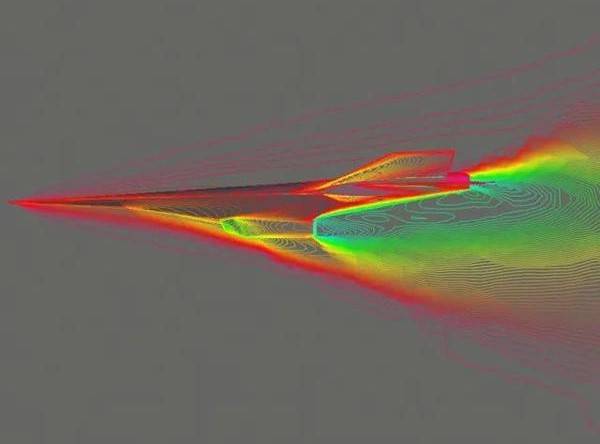
高速飞行的挑战
高速飞行带来了无数挑战,尤其是在红外成像和制导系统中使用的光学窗口方面。当高超音速飞行器以超过 5 马赫的速度穿越大气层时,它们会遇到复杂的流场,对这些窗口产生重大影响。这些流场的特点是压力和温度极高,会与光学材料产生一系列物理和化学作用。
其中一个主要问题就是这些相互作用造成的传输干扰。光学窗口设计为对特定红外波长透明,但在高速飞行的高强度条件下会发生扭曲和变形。这种干扰会导致传输图像的质量下降,影响制导系统的精度和可靠性。
此外,高速飞行环境还会使窗口受到热辐射和机械应力的影响。这些应力会导致窗口开裂或不透明,进一步影响红外图像的质量。图像质量的下降对终端制导系统尤为重要,因为即使是微小的失真也会导致目标定位精度出现重大偏差。
为了减轻这些挑战,研究人员正在探索能够承受高速飞行恶劣条件的先进材料和涂层。这些材料必须具有高耐热性、机械耐久性和相关红外波段的光学透明度。此类材料的不断开发和测试对于提高高超音速飞行器的性能和可靠性至关重要。
大气窗口和波段选择
波段
1-3微米、3-5微米和8-14微米波段通常被称为大气窗口,因为这些波段对大气的吸收极少,这对高超音速飞行器上的红外成像和制导系统来说是一个关键因素。由于这些波段能够穿透大气层,干扰最小,因此特别具有优势,可确保获得更清晰、更可靠的图像。
在高超音速飞行中,飞行器以极快的速度和高度运行,因此选择合适的波段至关重要。例如,1-3 μm 波段非常适合需要高分辨率成像的短程应用。该波段尤其适用于高精度探测小型快速移动物体。
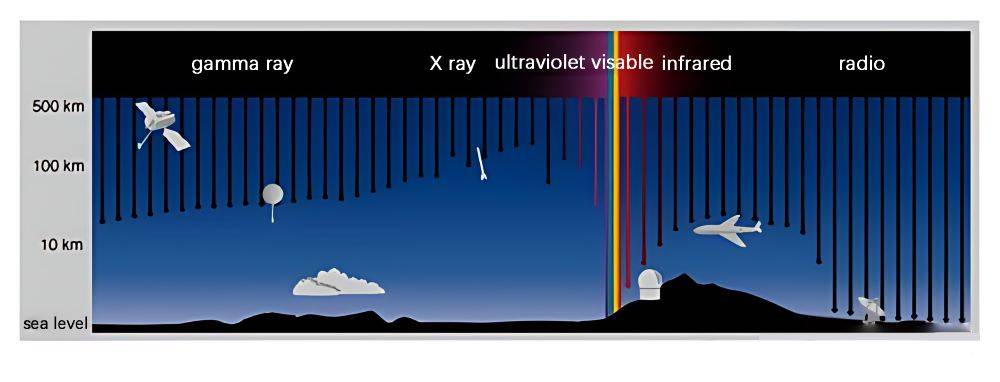
另一方面,3-5 μm 波段兼顾了短波和长波功能。它非常适合中距离应用,在分辨率和灵敏度之间提供了良好的折衷。这一波段通常用于对目标细节和环境穿透力都很重要的场合。
8-14 μm 波段也称为长波红外(LWIR)波段,在远距离应用和高背景辐射环境中表现出色。该波段在探测热信号方面尤为有效,因此在夜间行动和视觉对比度较低的条件下非常有价值。
| 波段 | 特性 | 适合应用 |
|---|---|---|
| 1-3 μm | 高分辨率、短距离 | 短距离探测快速移动的小物体 |
| 3-5 μm | 兼顾分辨率和灵敏度 | 需要详细图像的中程应用 |
| 8-14 微米 | 高灵敏度、远距离 | 远距离探测、夜间作业 |
波段的选择并不是任意的,而是根据任务的具体要求来决定的,包括飞行环境、目标特征以及尽量减少本底辐射干扰的需要。每个波段都具有独特的优势,可满足不同的操作需求,确保高超音速飞行器能够有效、可靠地执行任务。
选择标准
为高超音速飞行器选择合适的红外波段是一个多方面的决定,取决于几个关键因素。首先是 飞行环境 起着举足轻重的作用。高超音速飞行器在极端条件下运行,通常在 20 至 100 公里的高空,大气密度和成分变化很大。这些条件会影响红外辐射的传输和吸收,因此需要在这一范围内保持有效的波段。
其次 目标辐射特性 必须加以考虑。不同的目标会发出不同波长的辐射,所选波段必须对这些辐射敏感,以确保准确探测和跟踪。例如,某些目标可能会在 3-5 μm 波段发出强烈辐射,而其他目标则可能在 8-14 μm 波段范围内更容易被探测到。
最后、 本底辐射 带来了另一层复杂性。地球大气层、天体甚至太阳辐射都会产生背景噪声,从而掩盖目标信号。因此,所选波段必须在目标和背景之间形成清晰的对比,尽量减少干扰,提高信噪比。
下表概述了三个主要红外波段的典型特性,以作说明:
| 波段(微米) | 大气传输 | 典型应用 |
|---|---|---|
| 1-3 μm | 晴朗条件下较高 | 短程瞄准、导弹制导 |
| 3-5 μm | 中度,受水蒸气影响 | 中程瞄准、监视 |
| 8-14 μm | 高,受水蒸气影响较小 | 远程瞄准、夜视 |
总之,为高超音速飞行器选择红外波段并不是一个放之四海而皆准的方法。它需要仔细平衡环境条件、目标特征和背景辐射,以确保成像和制导系统的最佳性能。
光学窗口材料
常用材料
在高超音速飞行器领域,光学窗口材料的选择对于保持红外成像和制导系统的完整性和功能性至关重要。材料如 氟化镁 , 蓝宝石 , 尖晶石 , 氧化钇 , 氧化锆 , 硫化锌 和 金刚石 这些材料具有独特的性能,可以承受高速飞行的极端条件。
氟化镁 以其在紫外线到红外线光谱范围内的高透明度而闻名,因此非常适合需要在广泛波长范围内清晰传输的应用。 蓝宝石 则具有超强的硬度和耐热性,可确保在高超音速飞行过程中经受住磨擦力和高温的考验。
尖晶石 和 氧化钇 具有高折射率和低色散的特点,有助于最大限度地减少光学像差,提高图像的清晰度。 氧化锆 兼顾了机械强度和热稳定性,适用于对耐用性和耐温性要求较高的环境。
硫化锌 硫化锌在中波红外(MWIR)和长波红外(LWIR)区域具有出色的透射率,这对 3-5 μm 和 8-14 μm 大气窗口的成像至关重要。最后是 金刚石 具有无与伦比的硬度和导热性,可用于要求最高级别保护和性能的场合。
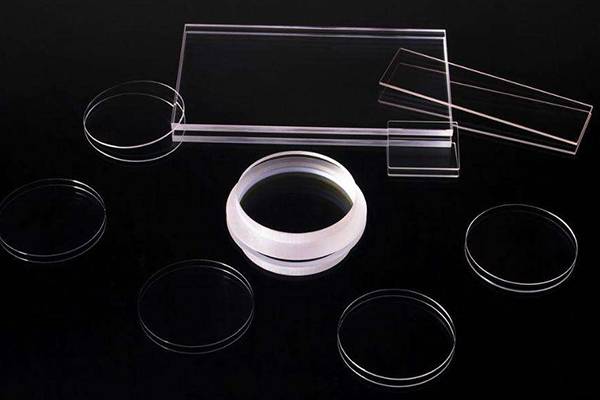
上述每种材料都具有独特的优势,能应对热冲击、机械应力和光学清晰度等特定挑战。因此,材料的选择是一个关键性的决定,受到飞行环境、目标特征以及成像和制导系统具体要求的影响。
性能和限制
用于制造高超音速飞行器光学窗口的每种材料都具有独特的特性,这些特性会影响其性能和对特定应用的适用性。
硬度
- 氟化镁:硬度适中,不易产生划痕,但与硬度较高的材料相比,更容易受到机械损伤。
- 蓝宝石 :硬度极高,具有出色的抗磨损和耐磨性,这对于在高速飞行中保持光学清晰度至关重要。
- 钻石:已知最坚硬的材料,即使在极端条件下也能确保最小的表面退化,但其应用受到成本和供应的限制。
耐热性
- 氧化钇:具有出色的热稳定性,能够承受高温而不发生明显降解,因此非常适合用于热辐射强烈的环境。
- 氧化锆:具有良好的耐热性,但可能会有一定的热膨胀,长期暴露在高温下会影响其光学性能。
- 尖晶石:兼顾了耐热性和适中的硬度,适用于对这两种性能都有要求的应用,但其热稳定性可能比不上氧化钇。
成本
- 硫化锌:由于其性能和成本效益的平衡,一般价格适中,应用广泛,但可能需要额外的涂层来提高其性能。
- 金刚石:虽然具有无与伦比的性能,但其高昂的成本和有限的供应量使其不太适合广泛用于光学窗口。
- 蓝宝石 :虽然比某些替代材料昂贵,但其卓越的硬度和耐热性证明了其在高性能应用中的合理性。
这些材料各有其优势和局限性,都是根据高超音速飞行器任务的具体要求精心挑选的,以确保在高速飞行的极端条件下实现最佳性能。
实验分析和结果
不同场景下的成像
在评估中波和长波红外热像仪的性能时,考虑其在不同运行环境下的有效性至关重要。这些环境包括强烈的太阳辐射、海面反射以及干扰弹的干扰。
在太阳辐射较强的环境中,中波红外热像仪的性能往往优于长波红外热像仪,因为中波红外热像仪具有更高的分辨率和对微小温差的灵敏度。因此,中波红外热像仪是探测和跟踪目标的理想选择,即使在强烈的日光下也能提供精细的细节。
相反,在涉及海面反射的情况下,长波红外热像仪则表现出更出色的能力。长波红外热像仪的光谱范围更广,对环境温度波动的灵敏度更低,因此能够有效滤除海面反射的眩光,为海上环境中的目标提供更清晰的图像。
干扰弹会产生巨大的电磁干扰,从而破坏成像系统,因此是一项独特的挑战。在这方面,长波红外热像仪再次证明了其优势。长波热像仪固有的抗干扰性能使其能够保持稳定的成像性能,确保在此类威胁面前仍能持续可靠地跟踪目标。
| 应用场景 | 中波红外热像仪 | 长波摄像机 |
|---|---|---|
| 太阳辐射 | 优 | 劣质 |
| 海洋反射 | 劣质 | 高级 |
| 干扰弹 | 下级 | 优 |
这一比较分析突出了每种类型的红外热像仪在特定场景中的独特优势,强调了根据作战环境和所遇到的威胁选择适当技术的重要性。
热辐射效应
高超音速飞行器窗口材料的选择不仅对保持结构完整性至关重要,而且对确保极端热条件下的红外成像质量也至关重要。高超音速飞行的典型高温环境会产生大量热辐射,从而降低光学窗口的性能,进而影响成像精度。这种退化是多方面的,涉及材料光学特性的变化,如透射率和反射率,以及热膨胀引起的机械变形。
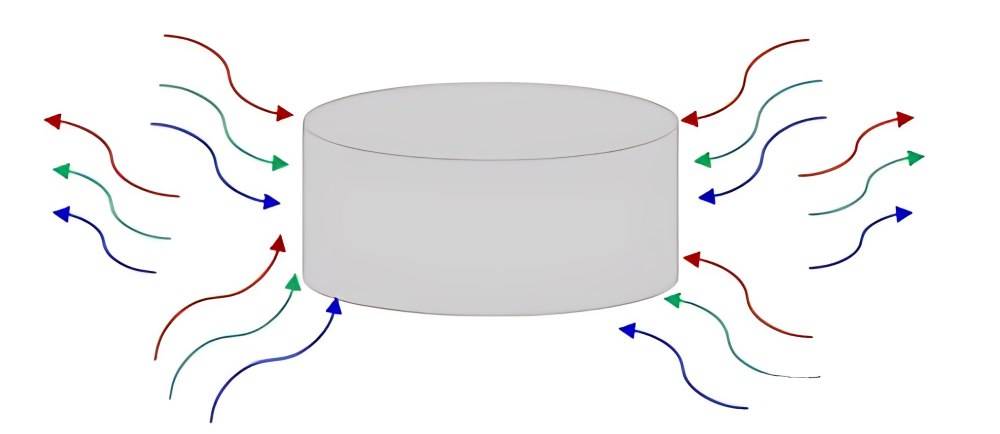
为了应对这些挑战,我们进行了实验分析,以评估各种窗口材料对热辐射和成像质量的影响。这些材料包括氟化镁 蓝宝石 和硫化锌等材料在模拟高温条件下进行了严格测试。测试评估了这些材料在抗热降解和保持清晰成像方面的性能。例如 蓝宝石 以高硬度和耐热性著称,即使在高温条件下也能保持光学清晰度。
| 材料 | 耐热性 | 光学清晰度 | 成本 |
|---|---|---|---|
| 氟化镁 | 高 | 中等 | 低 |
| 蓝宝石 | 极高 | 高 | 高 |
| 硫化锌 | 高 | 高 | 中 |
这些实验结果对于选择最佳窗口材料至关重要,这种材料既能承受高超音速飞行的恶劣条件,又能确保红外成像系统的可靠性和精确性。这项研究不仅有助于开发更好的材料,还有助于为高超音速飞行器设计更坚固、更有效的制导系统。
结论和未来方向
研究结果摘要
中波系统在捕捉目标的详细观测数据方面表现出卓越的能力,因此非常适合需要高分辨率成像的情况。相比之下,长波系统的突出特点是抗干扰能力更强,这对于在电子对抗措施面前保持作战完整性至关重要。
硫化锌被认为是一种特别适用于光学窗口的材料,因为它具有在极端条件下兼顾传输效率和结构完整性的独特性能。在高超音速应用中,这种材料尤其具有优势,因为热应力和机械应力是重要的影响因素。
| 系统类型 | 优势 | 理想情况 |
|---|---|---|
| 中波系统 | 高分辨率目标观测 | 详细成像和监视 |
| 长波系统 | 增强抗干扰能力 | 电子对抗环境 |
硫化锌在高温环境中的性能进一步支持了光学窗口的选择,它能保持稳定的光学传输速率,确保清晰、不间断的成像。这使其成为高超音速飞行器的首选,因为高超音速飞行器的运行条件远比传统飞机要苛刻得多。

对高超音速技术的影响
未来的高超音速技术研究应优先优化波段选择和窗口材料,以显著提高这些先进飞行器的性能和可靠性。鉴于高超音速飞行的极端条件(包括高温、复杂流场以及对精确成像和制导系统的需求)所带来的独特挑战,这一重点至关重要。
波段选择
选择适当的红外波段是优化高超音速飞行器性能的关键环节。1-3 μm、3-5 μm 和 8-14 μm 波段通常被称为大气窗口,由于对大气的吸收极少,因此具有明显的优势。不过,波段的选择必须根据飞行器的具体运行环境进行仔细调整。例如,3-5 μm 波段可能非常适合需要高分辨率成像的场景,而 8-14 μm 波段可能更适合反干扰应用。要做出明智的决定,必须全面了解目标辐射特性和本底辐射。
窗口材料
用于高超音速飞行器光学窗口的材料在确保成像和制导系统的完整性和功能性方面发挥着关键作用。氟化镁等材料 蓝宝石 尖晶石、氧化钇、氧化锆、硫化锌和金刚石等材料因其独特的性能而被广泛采用。每种材料在硬度、耐热性和成本方面都有明显的优势,但也有其固有的局限性。例如,虽然金刚石具有优异的硬度和导热性,但与氟化镁等材料相比,其价格也要昂贵得多。
性能和可靠性
要提高高超音速飞行器的性能和可靠性,需要从多方面着手。这不仅包括选择最合适的波段和材料,还包括开发先进的涂层和处理方法,以减轻高温环境和复杂流场的影响。实验分析表明,硫化锌等材料可以在性能和成本之间取得平衡,使其成为光学窗口的可行选择。
总之,未来的研究应着眼于弥合我们对波段选择和窗口材料认识上的差距,利用材料科学和工程学的进步创造出更坚固、更高效的高超音速飞行器。这种综合方法不仅能提高这些飞行器的现有能力,还能为未来航空航天技术的创新铺平道路。

